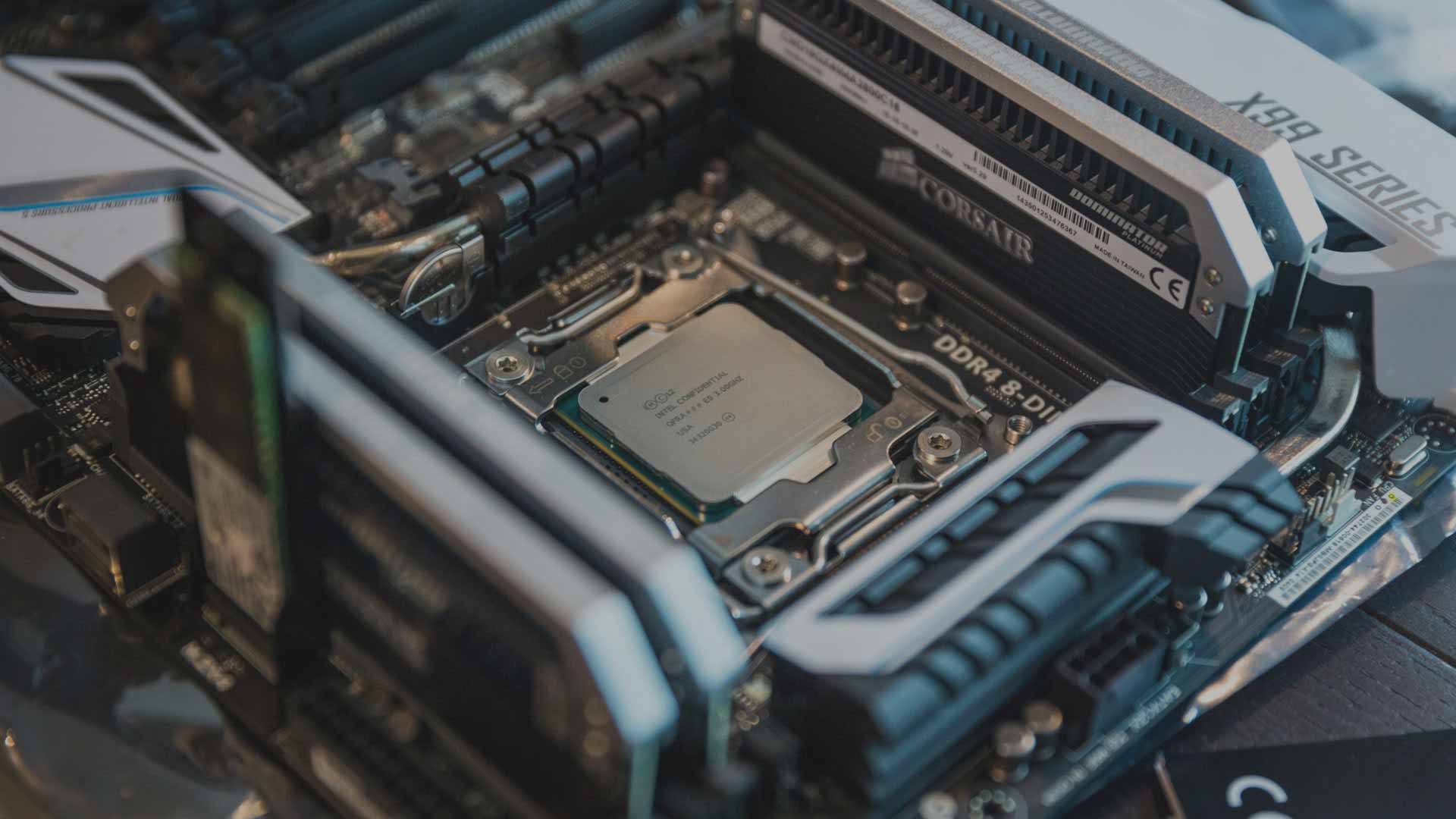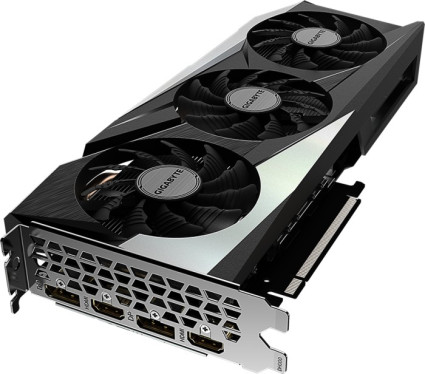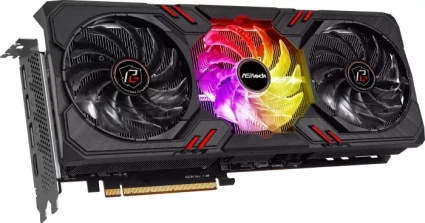
GIGABYTE RTX 3050 Gaming OC 8G vs. ASRock Arc A770 Phantom Gaming D 8GB OC
In diesem Vergleich von GIGABYTE RTX 3050 Gaming OC 8G versus ASRock Arc A770 Phantom Gaming D 8GB OC vergleichen wir die technischen Daten der beiden GPUs. Welche Grafikkarte ist schneller? Hier gibt es FPS & Benchmarks in Gaming und Anwendungen. Außerdem Daten zu Verbrauch, Effizienz (FPS pro Watt) und Preis-Leistung (FPS pro Euro).
Hinweis: Unsere Links sind Affiliate Links. Wir erhalten beim Kauf eine kleine Provision, ohne dass sich euer Preis erhöht.

Allgemeine Informationen
| Günstigster Preis |
|
|
| Hersteller | GIGABYTE | ASRock |
| Serie | NVIDIA GeForce RTX 3050 - 8GB | Intel Arc A770 Graphics - 8GB |
| Chip-Architektur | Ampere (ab 2020/Q3) | Xe-HPG "Alchemist" (ab 2022/Q1) |
| Chip-Bezeichnung | GA106-150-KA-A1 | ACM-G10 / DG2-512 |
| Fertigung | Samsung 8 nm | TSMC 6 nm |
| Chip-Größe | 276 mm² | 406 mm² |
| Kühlung | 3x Axial-Lüfter (80mm) mit 0dB-Zero-Fan-Modus | 3x Axial-Lüfter (90mm) mit 0dB-Zero-Fan-Modus |
Spezifikationen
Die Anzahl der Recheneinheiten, die Taktraten sowie die Größe des Cache sind neben der zugrunde liegenden Architektur ein Indiz für die Leistungsfähigkeit eines Produkts. Die GIGABYTE RTX 3050 Gaming OC 8G verfügt über 2560 FP32-ALUs und hat damit deutlich weniger Recheneinheiten als die ASRock Arc A770 Phantom Gaming D 8GB OC mit 4096 FP32-ALUs. Der Boost-Takt der GIGABYTE RTX 3050 Gaming OC 8G liegt mit 1822 MHz weniger als/wie bei der ASRock Arc A770 Phantom Gaming D 8GB OC mit 2200 MHz.
| Basis-Takt | 1552 GHz | unbekannt GHz |
| Boost-Takt | 1822 GHz | 2200 GHz |
| Übertaktung | +45MHz Boost | +100MHz Boost |
| Chip-Konfiguration | 20SM (2560SP / 80TMU / 32ROP) | 32Xe / 512EU (4096SP / 256TMU / 128ROP) |
| Rechenleistung | 9.33 TFLOPS (FP16), 9.33 TFLOPS (FP32), 0.15 TFLOPS (FP64) | 36.04 TFLOPS (FP16), 18.02 TFLOPS (FP32), N/A (FP64) |
Kompatibilität und Abmessungen
| Schnittstelle | PCIe 4.0 x16 (x8) | PCIe 4.0 x16 |
| Abmessung | 282 | 305 |
| Gesamthöhe | Dual Slot | Dual Slot (2.8 Slots) |
| Bauform | PCIe-Karte (full height) | PCIe-Karte (full height) |
| Slotblende | full height | full height |
| Leistungsaufnahme (TDP) | 130W | 225W (Intel) |
| Zusätzliche Stromanschlüsse | 1x 8-Pin PCIe | 2x 8-Pin PCIe |
Speicher
Die GIGABYTE RTX 3050 Gaming OC 8G verfügt über 8 GB GDDR6 Videospeicher, welcher an ein 128 Bit Speicherinterface angebunden ist und mit 14 Gbps taktet. Die Speicherbandbreite liegt damit bei 224 GB/s. Bei der ASRock Arc A770 Phantom Gaming D 8GB OC sind dagegen 8 GB GDDR6 VRAM mit einer Taktrate von 16 Gbps an einem 256 Bit Speicherinterface angeschlossen. Daraus resultiert eine Speicherbandbreite von 512 GB/s.
| Speicherkapazität | 8 GB | 8 GB |
| Speichertyp | GDDR6 | GDDR6 |
| Speicherinterface | 128 Bit | 256 Bit |
| Speichertakt | 14 Gbps (1750 MHz) | 16 Gbps (2000 MHz) |
| Speicherbandbreite | 224 GB/s | 512 GB/s |
Videoanschlüsse
| HDMI | 2x HDMI 2.1 | 1x HDMI 2.1 |
| DisplayPort | 2x DisplayPort 1.4a | 3x DisplayPort 2.0 UHBR10 |
Transcoding-Engine
| NVENC | 1x (7th Gen, max. Sessions: 8) | - |
| NVDEC | 1x (5th Gen) | - |
Encoding
| H.265 | ✓ (4K YUV 4:2:0 / 4K YUV 4:4:4 / 4K Lossless / 8K / HEVC 10bit support / HEVC B Frame support) | ✓ (4K YUV 4:2:0 / 4K YUV 4:4:4 / HEVC 10bit support) |
| H.264 | ✓ (YUV 4:2:0 / YUV 4:4:4 / Lossless) | ✓ (YUV 4:2:0 / YUV 4:4:4) |
Decoding
| AV1 | ✓ (8bit / 10bit) | ✓ (8bit / 10bit) |
| H.265 | ✓ (8bit 4:2:0 / 10bit 4:2:0 / 12bit 4:2:0 / 8bit 4:4:4 / 10bit 4:4:4 / 12bit 4:4:4) | ✓ (8bit 4:2:0 / 10bit 4:2:0 / 12bit 4:2:0 / 8bit 4:4:4 / 10bit 4:4:4 / 12bit 4:4:4) |
| H.264 | ✓ | ✓ |
| VP9 | ✓ (8bit / 10bit / 12bit) | ✓ (8bit / 10bit / 12bit) |
| VP8 | ✓ | ✓ |
| VP8 | ✓ | ✓ |
| VP8 | ✓ | - |
| VP8 | ✓ | ✓ |
API-Unterstützung
| DirectX | 12 Ultimate (12_2) | 12 Ultimate (12_2) |
| CUDA | 8.6 | - |
| Vulkan | 1.3 | 1.3 |
| OpenCL | 3.0 | 3.0 |
| OpenGL | 4.6 | 4.6 |
| Shader Modell | 6.7 | 6.6 |
| Multi-GPU-Unterstützung | - | - |
Chip-Unterstützungen
| Raytracing | ✓ (2nd Gen NVIDIA RTX) | ✓ |
| NVIDIA Tensor | ✓ (3rd Gen) | - |
| HDCP | 2.3 | - |
Sonstiges
| Herstellergarantie | drei Jahre (ab Produktionsdatum, Abwicklung über Händler) | zwei Jahre (Abwicklung über Händler) |

